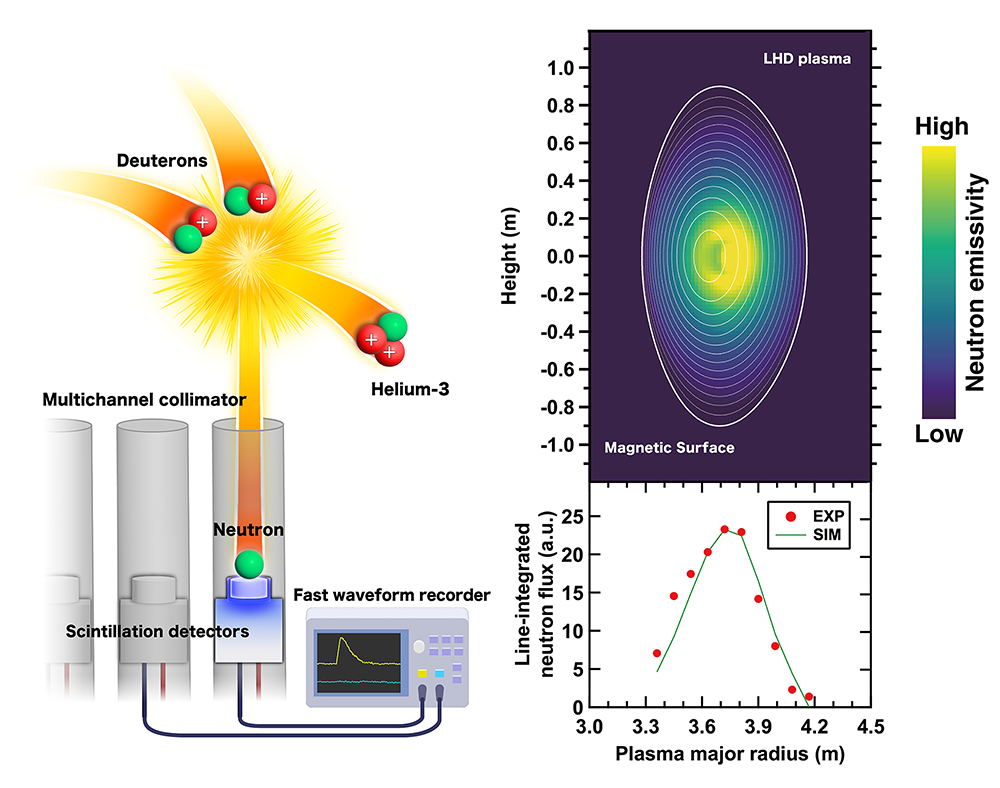Measuring the spatial distribution of
energetic particles in a plasma
In the deuterium plasma experiment at the Large Helical Device (LHD), the spatial distribution of energetic particles confined in the plasma was measured by using a neutron profile diagnostics to measure the neutron emissiomn profile. A comparison with the neutron emission profile predicted by the energetic particle orbit calculation shows good agreement with the experimental results under high and medium field strength conditions. This has led to a qualitative understanding of the confinement of energetic particles in the LHD.

In future fusion plasmas, energetic particles produced by fusion reactions will heat the plasma and maintain a high temperature and density. Therefore, good confinement of energetic particles is essential for the realization of fusion power generation. In order to predict the confinement of energetic particles in future fusion plasmas with high accuracy, it is necessary to verify numerical simulations in existing plasma generating devices. In the past, energetic particle confinement in helical plasmas has been studied by measuring neutron emission from the entire plasma in large helical devices (LHD).
The research team focused on how the direction of neutral beam heating injection and the magnetic field strength affect energetic particle confinement. Using neutron emission profile diagnostics, developed using the latest digital circuit technology, we obtained experimental results showing different neutron emission distributions, depending on the incident direction of neutral beam heating and the magnetic field strength.
In this study we further predicted the observed neutron emission distribution in the experiment by using an orbit-following numerical simulation. The shapes of the neutron emission distributions,calculated for high and medium field strength conditions,were in good agreement with those obtained experimentally, and the numerical simulations were validated for the LHD.
This research was carried out by a research group led by Kunihiro Ogawa and Mitsutaka Isobe at the National Institute for Fusion Science, in collaboration with Dr. Shota Sugiyama at the National Institutes for Quantum Science and Technology, Dr. D. A. Spong at Oak Ridge National Laboratory in the United States, and Dr. J. Jo at the Korea Institute of Fusion Energy.
The results of this research were published on April 28, 2021 in Plasma Physics and Controlled Fusion, an international journal on plasma physics.
